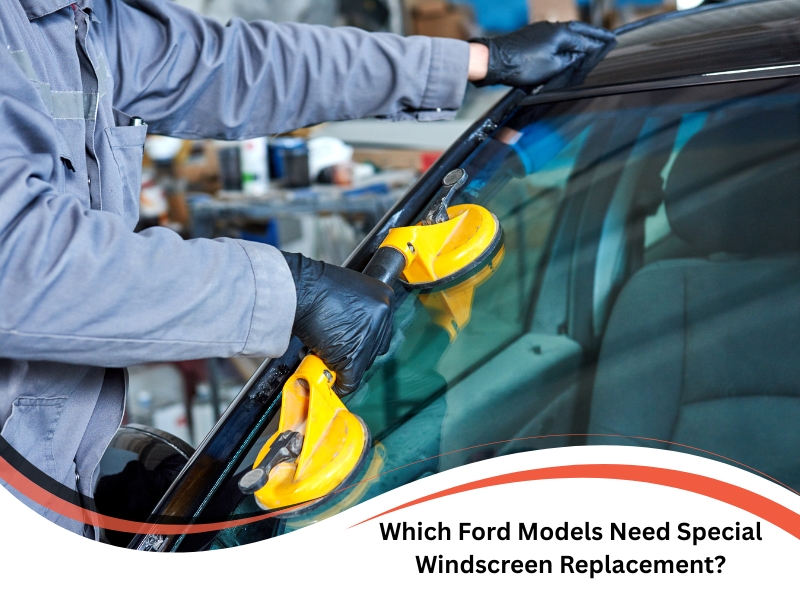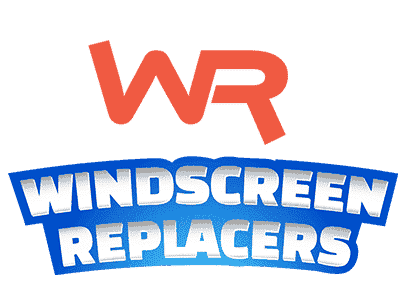Which Ford Models Need Special Windscreen Replacement?

Why are some Ford windscreens straightforward, while others are a complete headache? It often comes down to sensors, curves, and clever tech hiding behind the glass. If you’ve got a newer Ford or one with factory extras, chances are it needs more than just a standard swap. From ADAS calibration to HUD-friendly glass, getting it wrong can throw off everything from rain sensors to driver alerts. This article explains why specific Ford models need specialised windscreen replacement and how to make sure it’s done right.
What makes some Ford windscreens harder to replace?
When you’re working with specific Ford models, replacement isn’t always a quick in-and-out job. Several hidden factors increase the complexity.
- Curved laminated glass: Some Ford windscreens use tight curves and dual-layered lamination, making cutting and resealing more difficult. These shapes require exact-fit replacements to avoid wind noise and moisture entry.
- Heated windscreen elements: Models like the Mondeo or Territory often include heating strips that require careful handling and exact positioning. Reconnecting these elements incorrectly can cause them to short out or underperform.
- Built-in rain sensors: Replacements must align perfectly with sensor housings, or you’ll get false readings or total failure. Even a misaligned gasket can trigger automatic wiper activation without moisture present.
- Soundproofing and acoustic layers: High-end models like the Everest or Edge may feature acoustic glass that needs careful matching for cabin comfort. Poor acoustic matching leads to increased road noise and reduced insulation performance.
Even with a solid technician, using the wrong glass or missing a step can throw the whole thing off. It’s not just about fit—it’s about functionality.
Are newer Ford models more sensitive to windscreen damage?
Not all chips are equal, especially on newer vehicles. Even minor damage can escalate into a significant issue when it interferes with the technology embedded in the glass.
- Embedded forward-facing cameras: Damage near cameras can affect lane‑keeping, braking assist, or adaptive cruise. Chips or cracks in camera zones may trigger system errors even after a repair.
- Heads-up display (HUD) integration: The wrong replacement glass can misalign HUD projections or distort clarity. HUD-equipped Fords require exact reflectivity ratings to maintain visibility.
- Sensitive coatings and films: Some Ford glass includes UV or infrared layers that degrade quickly when scratched or poorly cleaned. These films also influence internal temperature and eye strain.
- Sensor-triggered safety features: Systems like driver alertness or sign recognition need perfectly positioned sensors to function. Even a few millimetres’ shift can compromise safety.
These built-in features make repairs more technical, and sometimes, a full replacement is the only safe route. That’s why it’s smart to explore affordable repair options for Ford windshield damage before jumping to replacement.
Why is Ford’s windscreen replacement more complex today?
Modern Ford windscreens do more than block wind—they’re tied to multiple safety and comfort systems.
- Calibration after install: Fords with ADAS tech require post-install calibration to avoid lag or misreads. Without recalibration, even minor glass variations can throw off visual recognition systems.
- Factory bonding specifications: Replacement glass must be bonded using factory-rated adhesive to prevent leaks or vibration. Incorrect adhesive can also compromise vehicle rigidity in a crash.
- In-glass antenna arrays: GPS and radio antennas embedded in the windscreen may stop working if incorrect materials are used. Some Ford vehicles combine these with heating elements, increasing failure risk when mismatched.
- Manufacturer-specific glass profiles: Small differences in curve or thickness can cause serious issues if mismatched. Even slight profile errors can distort visual fields or misalign HUDs.
The more connected the vehicle, the more technical the job becomes. A minor misstep can disable key safety features or trip warning lights. It’s not just a screen—it’s a calibrated safety layer.
How does model-specific calibration affect Ford windscreen replacement?
Not all Ford models calibrate the same. Some need static recalibration; others require dynamic driving tests. The model determines what’s needed.
| Ford Model | Calibration Type | Key Systems Impacted |
| Ford Ranger (2022) | Static + Dynamic | Lane assist, forward collision warning |
| Ford Puma | Static only | Adaptive cruise control |
| Ford Everest | Dynamic only | Rain sensors, auto braking |
| Ford Mustang | Static + HUD adjustment | Head-up display, front sensors |
- Multiple calibration methods: The Ranger and Mustang need both workshop-level and road-tested calibration. Static recalibration happens in a controlled environment; dynamic recalibration requires real driving scenarios.
- Recalibration zones: Installers must align sensor zones carefully based on model specs. These zones aren’t marked on the glass, so experience matters.
- Specialist scan tools: Calibration often requires Ford-specific diagnostic tools. Generic scan tools might not access the complete ADAS feature set.
- Recalibration cost: It’s typically separate from the replacement and must be factored in. Skipping this step may void insurance coverage or trigger compliance failures.
If calibration is skipped or botched, safety systems may underperform or fail altogether. With newer Fords, calibration isn’t optional.
Why do ADAS features make Ford windscreen replacement more technical?
Advanced Driver Assistance Systems (ADAS) are built to protect you, but they only work when perfectly aligned. Replacing a windscreen can knock them out of sync.
- Lane departure warning: Needs precision placement of camera systems behind the windscreen. Even tilt variance can skew road line recognition.
- Traffic sign recognition: Misaligned sensors may miss or misread signs. Faults in this system can lead to incorrect speed alerts or warnings.
- Adaptive high beam: This system relies on glass clarity and angle to adjust lights based on conditions. Any tint misalignment may affect sensor performance.
- Collision avoidance systems: Can fail if radar or camera signals are blocked or misdirected. Misalignment can delay emergency braking, increasing crash risk.
Just a few millimetres off and these systems can glitch. It’s the kind of job that demands expertise and patience, not shortcuts.
Can choosing the wrong glass affect your Ford windscreen replacement?
Absolutely. Just because glass fits doesn’t mean it performs.
- Wrong curve or thickness: Can throw off camera angles and cause sensor misfires. This is particularly common in models with advanced HUD overlays.
- Lacks thermal insulation: Leads to excess heat or glare, especially in Ford models designed for UV glare control. In summer, this can impact internal electronics.
- No HUD support: Standard glass in HUD-equipped vehicles may block or blur projections. Visibility drops, and critical display information can disappear altogether.
- Reduced bonding strength: Low-grade adhesives can fail early, leading to leaks or cracks. In an accident, this can affect how airbags deploy or how the glass holds up.
Poor replacements cause more problems than they solve. When it comes to Fords, glass isn’t interchangeable—it’s model-specific. Choosing OEM-grade parts and certified installers ensures safe and proper operation.
Final thoughts
Not every Ford windscreen can be swapped in 30 minutes. Some models come with built-in systems that demand specialist replacement and calibration. If you’ve noticed cracks or chips, check your model’s needs before locking anything in. Ask Windscreen Replacers about your model’s windscreen options—a helpful walkthrough can help you avoid wasted time and keep your Ford driving safely.
